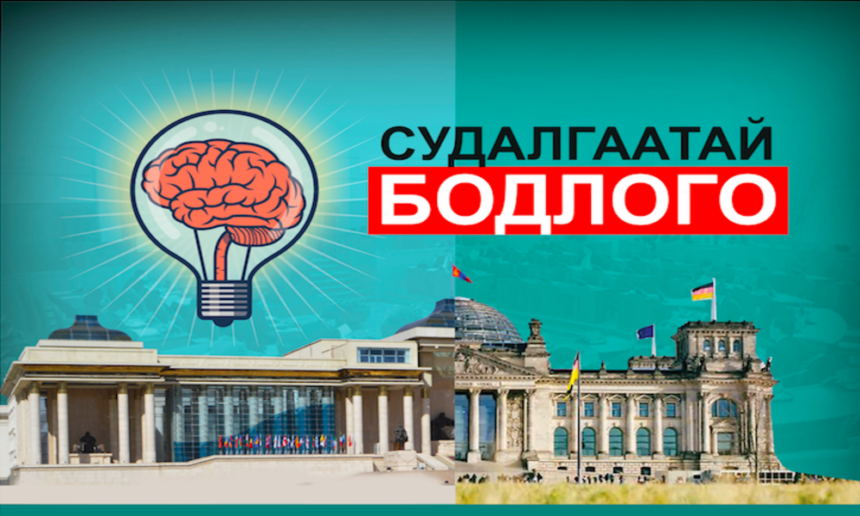When the Second World War that cost 80 million lives ended, Germany – the nation who started the war – was left with an economy that was completely ruined, as was their every city that was bombed. In order to rebuild the Western European economy, the United States developed a special initiative named ‘The Marshall Plan’ and allocated 12 billion USD (~100 billion USD at 2018 rates). The funding was partly distributed based on population size, which meant the United Kingdom received 27 per cent of the total funds, France 18 per cent, and West Germany 11 per cent. East Germany, Poland, and Hungary, which were all under the control of the Soviet Union, didn’t receive any funding from the Marshall Plan.
Ludwig Erhard, who is often dubbed as ‘the father of the German economic miracle’, became the Minister of Economic Affairs of West Germany in 1948. As a minister, Ludwig Erhard banned setting limits on production, issued new currency, and started bringing in Turkish people into Germany in the 1950s to make up for the workforce that was lost during the war. As a result, Germany revived its manufacturing sector, developed its economy rapidly, and drastically improved livelihoods. West Germany was developing faster than East Germany.
The secret behind Germany’s success in economic rebuilding and rapid development lied in the fact that they ensured all aspects of planning and execution of a public policy were based on comprehensive research and evidence.
Research in Germany
When it comes to scientific research, Germany has a strong infrastructure, a broad spectrum of research activities, fit-for-purpose facilities, and skilled people.
Germany’s research institutions are currently comprised of universities, universities of applied sciences, non-university research institutes, companies and federal as well as state (Länder) institutions. These institutions are funded either privately or publicly, and specialize in basic and applied research work.

According to the German Federal Ministry of Education and Research, Germany has a total of 400,000 R&D (research and development) researchers, 25 per cent of whom work in a university. In 2016, higher education institutions spent a total of 16.6 billion EUR on R&D activities. Approximately 81 per cent of the total funding came from the public budget, 14 per cent from the industry, and 5 per cent from international funding.
The Fraunhofer Society is the largest organization for applied research in Europe. The organization has a total of 72 institutes and research facilities that specialize in 6 areas: health and environment, security and protection, communication and knowledge, mobility and transport, energy and resources, and production and supply of services.
The Helmholtz Association, which comprises of 18 institutes, works on long-term research goals. The Leibniz Association connects more than 90 independent research institutes that address research issues ranging from the humanities and the social sciences to the natural sciences and engineering. The Max Planck Society, which specializes in basic research in the natural sciences, life sciences, humanities and social sciences, comprise of 84 research institutes. In total, Germany has over 800 R&D research institutes.
Two-thirds of Germany’s gross R&D expenditure come from the industry (companies), and one-third comes from the federal or state budget. Whether it is a public policy or a policy pursued in the private sector, Germany’s policies are always based on research and evidence. Therefore, the likelihood of errors is mitigated, which helps better achieve desired outcomes and sustain the benefits in the long term. In 2016, Germany spent 2.94 per cent of its GDP on R&D works.
Research in Mongolia
In 1990’s, Mongolia spent 1 percent of its GDP in science and technology sector and employed 6000 people. Yet, the number of employees in this field had shrunk 3 times in 2018 and 0.12 percent of its GDP was barely spent in this sector. In 2018, 34.6 billion tugriks out of state budget was spent, 15 billion tugriks out of this amount allocated to the Mongolian Academy of Science and the rest of the amount was dispensed to state owned universities.
According to the Ministry of Education, Mongolia’s R&D sector currently has 59 research institutions, 32 of which are public (including 10 institutes that fall under the umbrella of the Mongolian Academy of Sciences), 6 are private, 10 are public universities, and 11 are non-public universities. As part of the research institutes, a total of 42 start-up companies are experimenting with innovative product trials.
Despite passing different legislations and developing various policy documents on science, technology, and innovation, Mongolia hasn’t been able to fully implement those policies to diversify the economy, improve competitiveness, and make ideas a reality and generate the intended benefits.
The parliament passed ‘a law on laws’, which required all draft legislations to be based on sufficient research, analysed from different perspectives, and potential consequences taken into account. However, it hasn’t been implemented well. It isn’t optimal that the funding for preparing a draft legislation and doing the due research work is included in the budget controlled by an MP. Mongolia’s emerging research institutes and policy researchers aren’t being involved in the work to research draft legislations. Due to insufficient and inadequate research, we aren’t able to sustain the enforcement of laws, and are having to amend the law repeatedly. In the last 10 years, we changed 200-300 clauses in each of the mineral law, the education law, and the VAT law.
It is time for Mongolia to introduce cluster-based R&D work, reform our policy, ensure connection to businesses, significantly increase the R&D funding in the public and private sectors, develop the human resources, and make changes to financial and tax incentives.
Evidence-based policies will bring sustained development.
2019.04.24
Trans. by B.Amar







